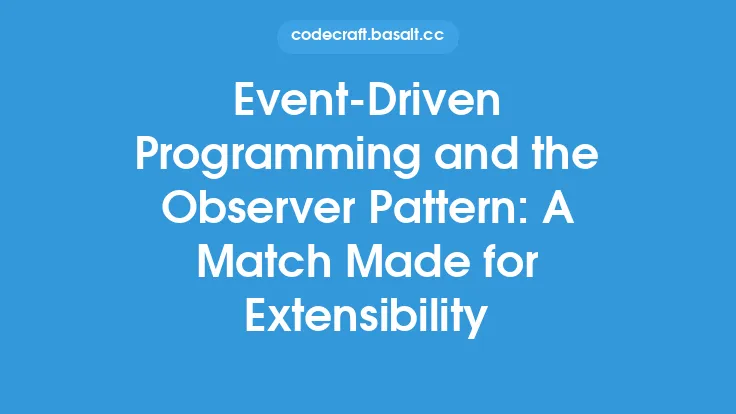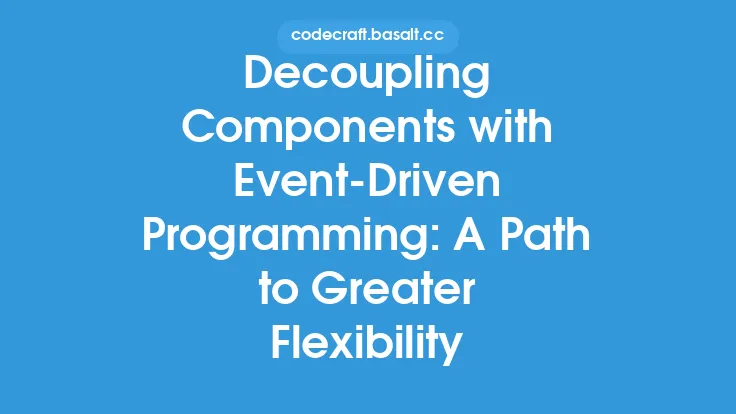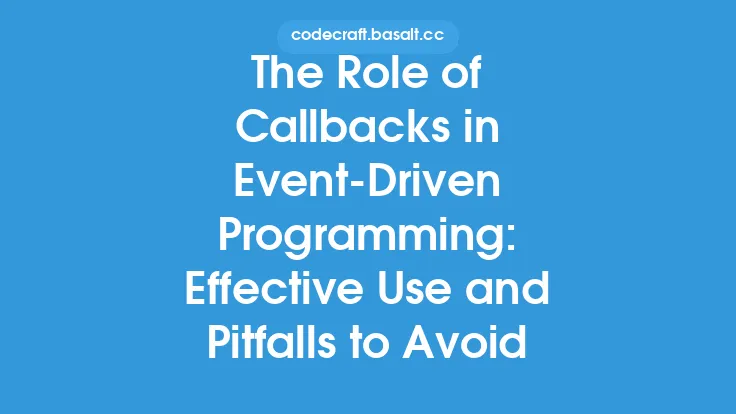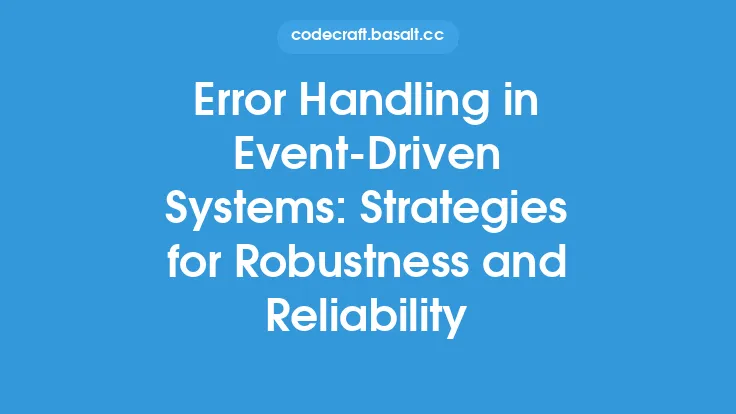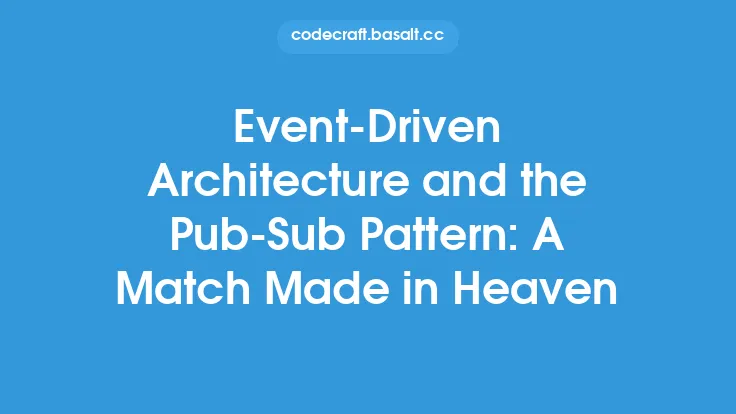Event-driven programming is a paradigm that revolves around handling and responding to events or user interactions. It's a fundamental concept in software development, particularly in applications that require real-time updates, such as web applications, mobile apps, and desktop programs. In this paradigm, the program's flow is determined by events, which can be anything from user input, network requests, or changes in the system's state.
What is Event-Driven Programming?
Event-driven programming is a programming approach where the program's execution is driven by events. These events can be generated by various sources, including user interactions, network requests, or system changes. The program responds to these events by executing specific code, known as event handlers or callbacks, which are designed to handle the event. This approach allows for a more flexible and responsive system, as the program can react to changing conditions and user interactions in real-time.
Key Concepts in Event-Driven Programming
There are several key concepts in event-driven programming that are essential to understanding this paradigm. These include:
- Events: Events are the triggers that drive the program's execution. They can be generated by various sources, including user interactions, network requests, or system changes.
- Event Handlers: Event handlers, also known as callbacks, are the code that is executed in response to an event. They are designed to handle the event and perform any necessary actions.
- Event Listeners: Event listeners are the components that register to receive events. They can be objects, functions, or other components that are interested in receiving events.
- Event Loop: The event loop is the mechanism that manages the events and dispatches them to the event handlers. It's responsible for ensuring that events are processed in the correct order and that the program remains responsive.
Benefits of Event-Driven Programming
Event-driven programming offers several benefits, including:
- Responsiveness: Event-driven programming allows for a more responsive system, as the program can react to changing conditions and user interactions in real-time.
- Flexibility: This paradigm allows for a more flexible system, as new events and event handlers can be added without modifying the existing code.
- Decoupling: Event-driven programming promotes decoupling, which means that components are loosely coupled and can be modified or replaced without affecting other parts of the system.
- Scalability: This paradigm allows for a more scalable system, as new events and event handlers can be added without affecting the existing system.
Challenges of Event-Driven Programming
While event-driven programming offers several benefits, it also presents some challenges, including:
- Complexity: Event-driven programming can be complex, particularly in large systems with many events and event handlers.
- Debugging: Debugging event-driven systems can be challenging, as the program's flow is determined by events, which can make it difficult to reproduce and diagnose issues.
- Performance: Event-driven programming can impact performance, particularly if the event loop is not optimized or if there are too many events being processed.
Programming Languages and Event-Driven Programming
Several programming languages support event-driven programming, including:
- JavaScript: JavaScript is a popular language for event-driven programming, particularly in web development. It provides built-in support for events and event handlers, making it an ideal choice for developing responsive web applications.
- Python: Python is another language that supports event-driven programming. It provides several libraries and frameworks, including Twisted and asyncio, that make it easy to develop event-driven systems.
- Java: Java is an object-oriented language that supports event-driven programming. It provides several libraries and frameworks, including JavaFX and Swing, that make it easy to develop event-driven systems.
Real-World Examples of Event-Driven Programming
Event-driven programming is used in a wide range of applications, including:
- Web Applications: Web applications, such as Google Maps and Facebook, use event-driven programming to respond to user interactions and update the UI in real-time.
- Mobile Apps: Mobile apps, such as Instagram and Twitter, use event-driven programming to respond to user interactions and update the UI in real-time.
- Desktop Programs: Desktop programs, such as Microsoft Office and Adobe Photoshop, use event-driven programming to respond to user interactions and update the UI in real-time.
Conclusion
Event-driven programming is a powerful paradigm that allows for developing responsive and flexible systems. It's a fundamental concept in software development, particularly in applications that require real-time updates. By understanding the key concepts, benefits, and challenges of event-driven programming, developers can create more responsive and scalable systems that meet the needs of users. Whether you're developing web applications, mobile apps, or desktop programs, event-driven programming is an essential skill that can help you create more effective and engaging software.
